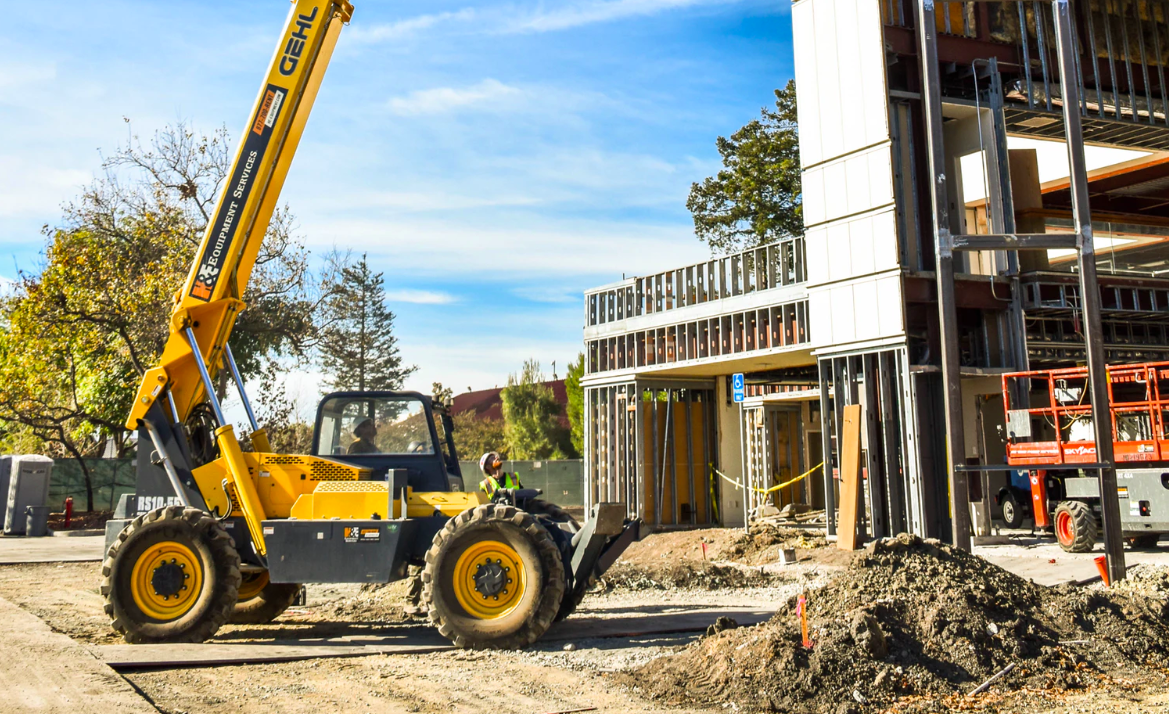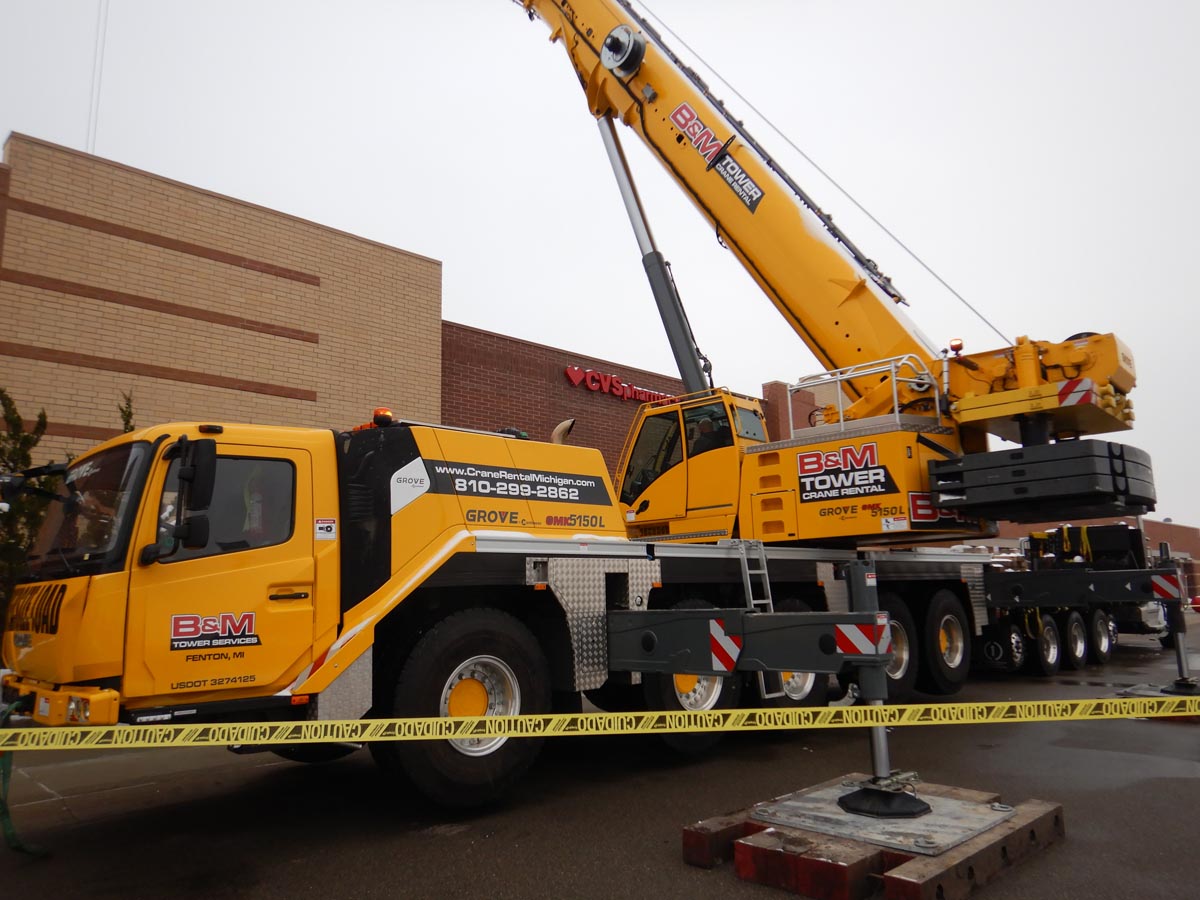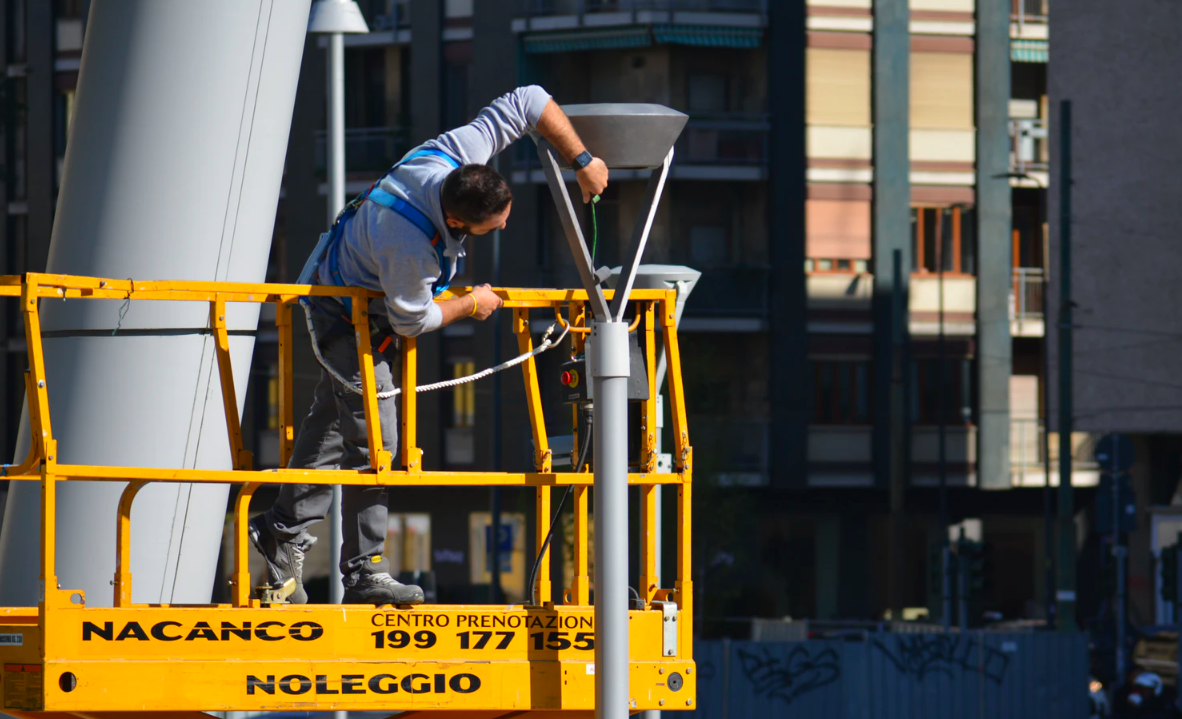Undoubtedly, the first thing that jumps to mind when we think of cranes is the enormous tower cranes that stretch into and across the sky in busy cities. However, mobile cranes are arguably more impressive for their sheer flexibility and utility. But, what are these vehicles? And, what exactly do mobile cranes do?

What is a mobile crane?
The name says it all. Tower cranes, which we just mentioned, are stationary. They are often erected at the start of a building project, remain on the site for the duration, and are dismantled at the end. The same goes for some other types of cranes, like level-luffing cranes.
In contrast, mobile cranes have the ability to move from place to place in a self-propelled manner. That means they usually consist of a boom with a hoist, just like any other crane, but they are mounted on the body of a vehicle. A mobile crane’s cabin also has familiar driving controls like a steering wheel, gas and brake pedals, and gears.
Because they aren’t fixed to a location, most mobile cranes come with outriggers. These are footpads that can be deployed to help stabilize the crane.
Mobile cranes are on average smaller and possess lower capacities than fixed cranes. However, gigantic mobile cranes like the Liebherr LTM can turn that principle on its head.
What types of mobile cranes are there?
Although the general nature of cranes remains largely the same, there are many different types of mobile cranes which are ideal for different jobs. Different types of vehicles and booms can be mixed and matched, but the main categories are below.
Main mobile crane categories
- Crawler crane: A type of mobile crane that runs on caterpillar tracks instead of wheels.
- Off-road crane: Consists of a four-wheel vehicle with exceptional ground clearance.
- All-terrain cranes: These are much larger than off-road cranes with an extended body and many more wheels.
- Boom lift: Any type of mobile crane with an aerial work platform (AWP) attached to the boom.
- Telescopic crane: This crane’s boom consists of cross-sectional parts that fit inside each other and extend outwards.
- Jib boom crane: Also called an articulating boom, this boom consists of two or more sections with an elbow-like joint for more maneuverability.
- Truck crane: A mobile crane where the body looks and functions just like any typical truck. A cherrypicker crane is a typical example, although these cranes can be much larger.
As we mentioned above, it’s possible to mix and match different vehicles and booms. For example, you could have a truck crane fitted with either a jib or telescopic boom. The same goes for all the other types of mobile cranes.

Where and how are mobile cranes usually used?
First of all, the main benefits of mobile cranes should already be apparent. Unlike other stationary cranes, they can move from one place to another by themselves. This gives using them the following advantages.
They can:
- Be used on multiple sites
- Require minimal set up at each site
- Be easily rented out on a short term basis
- Be taken to hard-to-reach sites (in the case of off-road, crawler, or all-terrain cranes).
And in the case of a truck crane or some other mobile cranes, they can be easily driven on public roads.
So, with that in mind, the following are the most common ways in which mobile cranes are used.
Transportation
Many mobile cranes, especially truck cranes, are equipped to transport goods, even across great distances. Of course, they are already capable of supporting heavy loads. And truck cranes usually have a bed for placing items to be hauled from one place to the next.
Construction sites
Although stationary cranes are almost always on duty, mobile cranes are also used on construction sites. By moving to parts of the site that are out of reach, they can fill the gaps left by tower or level-luffing cranes. Their ability to carry items from one part of the site to another can also be useful.
It’s important to select the right crane for the job depending on the construction site. For example, crawler cranes might be best where the soil quality is poor for stability. Off-road or all-terrain cranes can also reach sites well off the beaten track where erecting a tower crane (and even transporting its parts) might be almost impossible.
Municipal works and maintenance
This is probably the most common and well-suited job for mobile cranes. These jobs are mostly done in dense, urban areas. Also, they are usually completed over a short period of time. Think of repairing power transmission towers, HVAC units, exterior plumbing, etc.
Certain mobile cranes can easily drive right to the location they are needed with minimum disruption. Their smaller size provides a maneuverability advantage. Plus, it can make them well suited for reaching projects on the lower end of the height spectrum.
The right mobile crane for your job?
As you can see, mobile cranes are a diverse range of construction equipment. The right crane can be a cornerstone of your project, big or small. That’s why it’s so important to pick the best type of mobile crane for your exact needs. Do your research and make the right decision to save money and time and to keep your project and employees safe. Hopefully, you now know a little more about mobile cranes and how to use them to point you in the right direction.


